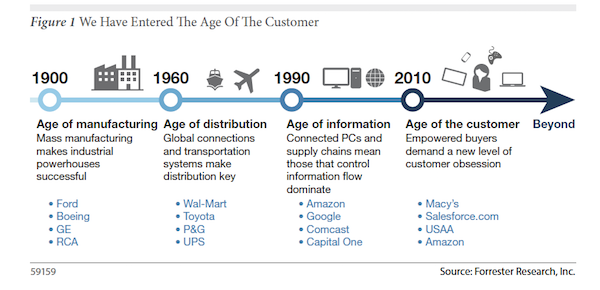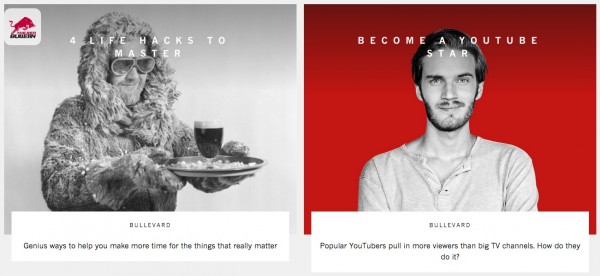Audience Optimization: Giving Your Audience What It Wants
Why you must understand your customers and the language they use.
Understanding your customers, where they are, and how to engage them is the backbone of marketing. This isn’t a new concept. It’s how marketers have been tackling things for years.
In the digital age, however, the channels are complex. This makes your marketing more complicated than it’s ever been, but also more targeted.
Through digital marketing, you can find out how your customers search for your products or services online, what their expectations are from your brand, and where the opportunities are to engage, earn their trust, and provide solutions to them at every stage in the buying cycle.
This takes one important characteristic: the ability to embrace chaos and give in to the fluid nature of digital marketing. You must be responsive to meet your audience’s needs.
It also forces you to look at optimization in a new and different way. No longer are you just optimizing for search engines. You are optimizing for the end user.
Why You Need An Audience Optimization Strategy
Every online marketing tactic you hear of should have a well-thought-out strategy behind it. A tactical approach to digital business is little help in creating solutions. This is because relying solely on tactics treats the symptoms and not the cause.
Just as we must take a step back to look at who we’re optimizing for, we also must take a step back and know why we are approaching digital marketing the way we do. This helps us become strategic marketers.
It’s not about what you think you are or how you think it should be said. It’s your audience and their language. Language and audience are the things that transverse channels, not optimization techniques for those channels.
‘The Age of the Customer’
Whether the customer knows it or not, they are buying through all sorts of connected channels. The following illustration by Forrester helps us understand the evolution to the “age of the customer” and the importance of audience:

What do you get out of the ability to produce something, distribute something, and understand something using data? You gain the ability to truly know your customers.
Any company that shows up and says, “I have the power,” fails from the beginning.
For example: Companies that use a combination of digital marketing, marketing automation and proper lead scoring are more effectively understanding their audience and how they speak and communicate in certain channels, making them smarter marketers.
This, in turn, is helping these companies align their editorial and publishing exercises to be more focused on the use and value their product and service it brings to the audience. More recently this topic has been labeled “native advertising.” In reality, though, it’s just great content about a product or service that is relevant to the audience – and not just marketing speak.
Understanding Audience Intent
Traditional search engine optimization (SEO) has taught us that we need to identify queries in a search engine so we can choose keywords to insert into the content we create for that query.
Audience optimization is a way of planning and doing business online, across many channels, disciplines and technologies – all meant to reach your audience at the moment they need you.
- Are they ready to buy?
- Are they merely doing research?
- Are they looking for reviews of your company?
- Is it from a computer, or mobile device such as a smartphone or tablet?
- Did an ad on TV or in print trigger the search, or did word of mouth or a social network pique their curiosity?
The truth is, the buying cycle almost always has more than one of these elements.
You might think the research and shopping that occurs on your site is the result of one singular action by the user. They wake up one day and decide they need your product or service, type a query into Google, find your site, research your company, and either buy your product or inquire into your services right then and there.
Research and shopping occurs way beyond the boundaries of your business’s walled-in garden, before your potential customer even lands on your website.
Leaving the choice to make that purchase or inquire about a service is typically the tail-end result of a process that began long ago.
The Purchase Cycle: A Story About Shoes
Jane is looking for dress shoes for an upcoming wedding in which she is a bridesmaid. She already has the intent to buy, but she’s not sure where yet, or what type of shoe is best for her dress.
She’s on Facebook one afternoon, and sees that one of her friends “Liked” Shoe Company A’s Facebook page. She checks out the page and then signs off.
Later that week, she queries [dress shoes, bridesmaids] in Google. The search engine returns a helpful article on how to choose a bridesmaid shoe. It happens to be authored by that very same company she saw on Facebook earlier that week.
Recognizing the company name, she bookmarks the post and reads it a few days later. The article is so helpful to her that she decides to follow the company’s link to its Twitter account, embedded in the article.
But she’s not ready to buy just yet. She continues to do her research over the period of a couple weeks, and finds several discount stores that match and sometimes even beat Shoe Company A’s prices.
But Jane is concerned with the quality of the shoe, not just the price. So she goes back on Twitter and asks the company about the quality of their shoes, and to her surprise, she actually gets a response from Shoe Company A.
The company sends her to a page on their site that talks about the handmade quality of their dress shoes. And because they want her business, they remind her of the special discount for followers of the company’s Twitter profile.
Jane is almost convinced, but she wants to make sure they practice what they preach, so she turns to her friend on Facebook whom she saw Liked the shoe company’s page weeks prior.
Now Jane is looking for a recommendation, as many often do in the purchase cycle. Turns out, her friend bought shoes from the company in question, and could speak to the quality.
The next morning, “Jane the shopper” turns into “Jane the customer.”
A sales cycle like this is not uncommon, and is the reason why understanding the path that leads to a query and a sale requires that brands be in the right place at the right time – where the conversations that matter to your brand are happening.
What Is Successful Audience Optimization?
One important stat to look at is audience engagement. It’s not just about pageviews or traffic. What’s the lifetime value of your audience?
It takes you so long to earn a customer. The last thing you want to do is lose them.
Would you rather have a consistent couple of $100 purchases every month or so across 5, 10, 15 years, or a one-and-done purchase? Imagine what you’d get in return for concentrating your efforts on getting 10, 20, or 30 loyal customers.
Another key to successful audience optimization: listen more, talk less. Active listening, to where a person truly understands your brand or business is hearing them, is truly endearing.
Understand where a person is coming from, and let them be heard. Don’t hide or stifle or try to control the conversation. Allow the voices to be heard. Magical things happen.
For inspiration, look at a brand like Red Bull. They sponsor various sports. Also, they launched a magazine called The Red Bulletin, which covers lifestyle topics that are associated with what their audience does.

They don’t write about energy drinks; they write about clothing, concerts, and extreme sports. While that has nothing to do with energy drinks, it has everything to do with talking to an audience, in many different ways, that may drink energy drinks.

Also, look at Go Pro. They created an environment where users create video content that helps the brand market their product. How many videos on YouTube can you find that people have filmed using a helmet-mounted GoPro camera? Tons.
Key Takeaways
- Within the fluid nature of digital marketing, you need to embrace chaos, and be responsive enough to shift focus at a moment’s notice to reach your audience.
- Audience optimization is about deciphering customer intent, and trying to pinpoint exactly what your users are trying to do online when they perform a query.
- Understanding the path that leads to a query – and eventually, a sale – allows you to create a strategy where your brand can be in the right place at the right time.
Author’s Note: This is the first in a series of posts on Momentology that will offer visibility into the reality of a digital business that’s driven by strategy. One concept you must wrap your head around in order to have a successful strategy is giving your audience what it wants. Future installments will look at the big picture behind some of the most-talked-about tactics and issues in digital marketing. We will explore what you need to know to bring some much-needed strategy to the digital business culture you want to create.